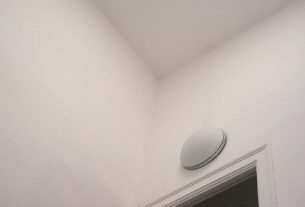Contents
Why insulate your roof well?
2 types of roof insulation
Insulation materials for pitched roofs
The insulation of a flat roof
A pitched roof consists of several elements laid in succession from the inside to the outside, the framework, on which the various roof insulation elements, the under-roof screen, the ventilation and the under-roof space are laid. And then the roofing, with its water drainage system and openings.
The insulation of the roof is an essential step that must be carried out correctly to guarantee the water tightness and durability of the house and the comfort of its inhabitants.
Why insulate your roof well?
The roof is one of the most sensitive points of the house in terms of energy loss. 30% of the heat lost escapes through the top when it is poorly insulated. Before you insulate, you should check:
– the integrity of the roof (waterproofing, condition of the roof structure, etc.);
– that the framework can support the insulation chosen.
It is, therefore, necessary to be vigilant and create a high-performance envelope to:
– ensure the comfort and well-being of the inhabitants;
– keep the interior warm in winter;
– keep the coolness and prevent the heat from entering in the summer;
– limit energy loss;
– limit energy wastage;
– create a house with good thermal performance;
– preserve the integrity of the house for longer.
To know what insulation is used for the roof, you first need to understand whether the attic is:
– habitable and used (convertible);
– uninhabitable (lost): only the ceiling of the top floor (attic floor) can be insulated.
2 types of roof insulation
In the case of habitable attics, there is a choice between two types of insulation:
1. Insulation from the inside
This is the classic insulation method and requires little work, as the insulation is laid under the roof, i.e., acoustic ceiling. You have two choices:
– single-layer insulation, which is installed in the structure of the roof frame (between the rafters);
– double-layer insulation (one layer between the rafters, a second layer covering it).
2. Insulation from the outside: the insulation is laid between the frame and the roof

Insulation from the outside is:
– more efficient;
– does not reduce the living space;
– ideal solution for construction.
Good to know: if it is a renovation, the roofing must be removed beforehand.
Insulation materials for pitched roofs
For the insulation of a pitched roof, there is a choice of several materials, sold in different forms:
– Panels:
– wood fibre;
– polystyrene;
– cellular glass;
– rock wool;
– cellulose.
– Rolls:
– glass wool;
– sheep’s wool.
– polyurethane foam.
Sprayed pulp: cellulose wadding
To choose your insulation, check its thermal resistance designated by the letter R: the higher the R, the better the insulation performs.
Insulating a flat ceiling
Insulating the flat roof is compulsory and essential to:
– Ensure thermal comfort in winter and summer.
– Avoid energy losses as much as possible.
– Protect the support of the flat roof and the structure of the house from temperature changes.
Indeed, as heat rises naturally, the roof is one of the sensitive points of the house.
Insulation materials for the flat ceiling
A flat ceiling can be insulated with different materials:
– expanded polystyrene (EPS);
– mineral wool: rock wool, glass wool, etc.;
– expanded perlite;
– cellular glass;
– rigid polyurethane foam;
– expanded clay.
Choosing the right insulation for the flat ceiling
The choice of insulation is mainly a matter of consideration:
The type of flat ceiling:
– accessible;
– inaccessible.
The type of support:
– masonry;
– sheet steel;
– wood, etc.
The protection that will be applied last (the roofing)
Finally, the compressive strength, classified from A to D, respectively, will be applied from the least to the most resistant. That’s how you have your roof and ceiling insulated.
Note: Unlike sloping and rounded roofs, a flat roof cannot be insulated from the inside. According to the rules of the trade, it must be insulated from the outside. The insulation is, therefore, located above the vapour barrier.




I never knew that home insulation could help maintain your interior’s temperature during warm or cold seasons. I plan to build a house once this pandemic ends, and I wanted to learn more about how I could make it comfortable for my family. I’ll be sure to consider looking for a contractor that could insulate my home for me!